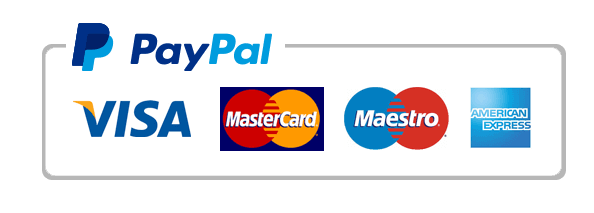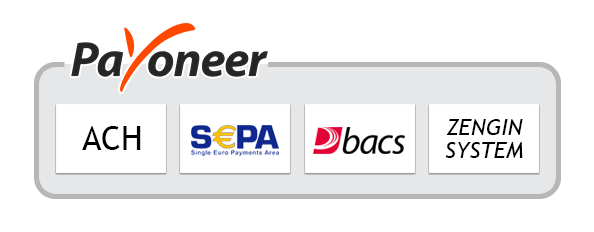Table of Contents
Introduction
New York, NY – March 12, 2025 – The Global Clean Label Mold Inhibitors Market is entering an exciting phase of expansion and opportunity, with its value projected to nearly double from USD 1.2 billion in 2024 to USD 2.3 billion by 2034. This growth, accelerating at a compound annual growth rate (CAGR) of 6.5% during the forecast period from 2025 to 2034, is fueled by increasing consumer demand for products with recognizable and natural ingredients.
As awareness spreads about the health impacts of synthetic preservatives, more consumers are pushing for clean-label options, making this market increasingly popular. This shift is not just about meeting current needs but is also opening new avenues for innovation and market penetration across various food industries.
Companies in the food sector see this as a chance to differentiate their products and tap into new consumer segments, driving further market expansion and opportunities. With its promise of safety and transparency, the clean label trend is not just a temporary shift but a significant movement toward sustainable and consumer-friendly food solutions.

Key Takeaways
- Global Clean Label Mold Inhibitors Market is expected to be worth around USD 2.3 Billion by 2034, up from USD 1.2 Billion in 2024, and grow at a CAGR of 6.5% from 2025 to 2034.
- Powdered clean-label mold inhibitors dominate the market, holding a 67.4% share.
- Starch-based mold inhibitors account for 30.2% of the global market share.
- Food and beverages make up 52.2% of clean-label mold inhibitor usage.
- Direct sales channel represents 48.3% of clean label mold inhibitors’ market distribution.
- North America leads the Clean Label Mold Inhibitors Market with 41.8%, valued at USD 0.5 billion.
➤ For a deeper understanding, click on the sample report link: https://market.us/report/clean-label-mold-inhibitors-market/request-sample/
Report Scope
| Market Value (2024) | USD 1.2 Billion |
| Forecast Revenue (2034) | USD 2.3 Billion |
| CAGR (2025-2034) | 6.5% |
| Segments Covered | By Form (Powder, Liquid), By Ingredient (Starch, Vinegar, Fermented Flour, Whey, Others), By End-use (Food and Beverages, Animal Feed, Pharmaceuticals, Personal Care and Cosmetics, Others), By Distribution Channel (Direct Sales, Retail Sales, Online Sales, Others) |
| Competitive Landscape | Ara Partners, Archer Daniels Midland Company, BASF SE, BioVeritas, Cargill, Corbion, E.I. DuPont De Nemours and Company, Ingredion Incorporated, J&K Ingredients, Kemin Industries Inc., Kerry Group plc, Koninklijke DSM N.V., Lesaffre Corporation, Puratos Group, Ribus, Inc., Tate and Lyle PLCare |
➤ Directly purchase a copy of the report – https://market.us/purchase-report/?report_id=140721
Emerging Trends
- Natural Ingredient Innovation: Companies are increasingly experimenting with natural sources such as vinegar, rosemary extract, and fermented sugars to develop mold inhibitors. These ingredients are favored for their minimal processing and perceived health benefits, aligning with consumer preferences for products with simpler, more natural ingredient lists.
- Technological Advancements in Preservation: Advanced preservation technologies like high-pressure processing (HPP) and pulsed electric fields (PEF) are being integrated with clean-label practices. These methods extend shelf life without the need for chemical preservatives, appealing to health-conscious consumers.
- Sustainable and Ethical Sourcing: There’s a growing trend toward sourcing ingredients ethically and sustainably. Consumers are increasingly mindful of not only what is in their food but also the environmental and social impact of their food choices, driving demand for responsibly sourced mold inhibitors.
- Increased Transparency: Brands are not just removing unwanted ingredients but are also enhancing transparency about what’s in their products and how they are made. This trend is leading to more detailed labeling and marketing strategies that highlight the natural and clean aspects of mold inhibitors.
- Expansion in Non-Food Applications: Clean label mold inhibitors are finding new applications beyond food, in sectors like cosmetics and pharmaceuticals, where there is a parallel demand for natural and non-toxic ingredients. This diversification is opening new markets and opportunities for growth.
Use Cases
- Bakery Products: Clean label mold inhibitors are extensively used in bakery items to extend shelf life while maintaining a ‘natural’ product label. This allows manufacturers to meet the dual demands of longer-lasting freshness and clean ingredient lists, appealing to health-conscious consumers.
- Dairy Alternatives: In the growing market of plant-based dairy alternatives, such as nut milk and vegan cheeses, clean-label mold inhibitors are crucial for preventing spoilage and enhancing shelf stability without synthetic preservatives.
- Meat and Poultry: Natural mold inhibitors are critical in meat and poultry applications, providing safety and longevity. They help maintain product quality and consumer trust in brands that promote natural ingredients and methods.
- Beverages: Natural preservatives derived from clean-label mold inhibitors are used in juices, teas, and other beverages to prevent microbial growth and fermentation, ensuring product safety and quality over an extended shelf life.
- Packaged Snacks: For packaged snacks that require extended shelf life without chemical preservatives, clean-label mold inhibitors offer a solution that aligns with consumer demand for snacks made from simple, recognizable ingredients.
Major Challenges
- Cost and Scalability: Integrating clean-label mold inhibitors can significantly increase production costs compared to synthetic alternatives. Scaling these natural solutions to meet large-scale demand remains a challenge for many food manufacturers, potentially impacting pricing and profitability.
- Regulatory Hurdles: Navigating the complex and varying global regulatory landscape for food preservatives can be particularly challenging for natural ingredients. Compliance often requires extensive documentation and testing, slowing down the time to market.
- Consistency and Effectiveness: Natural mold inhibitors may vary in their effectiveness across different food matrices and storage conditions. Achieving consistent performance that matches synthetic preservatives is a major hurdle, often requiring additional research and development.
- Consumer Perception: While clean-label ingredients are generally well-received, there is still skepticism regarding their efficacy and safety. Educating consumers and building trust remains a significant challenge for brands transitioning to clean-label solutions.
- Shelf Life Limitations: Despite advancements, natural mold inhibitors often fall short in matching the shelf life extension capabilities of their synthetic counterparts. This limitation can affect the marketability of perishable products, particularly in regions lacking advanced logistics and storage facilities.
Market Growth Opportunities
- Emerging Markets: Increasing consumer awareness and demand for natural products in emerging markets present significant growth opportunities. As these markets develop, there is a rising preference for clean-label foods, which drives the demand for natural mold inhibitors.
- Innovation in Product Formulation: Continuous innovation in natural preservatives can lead to more effective and versatile clean-label mold inhibitors. This can expand their applicability across a wider range of products, enhancing market reach and consumer acceptance.
- Collaborations and Partnerships: Strategic partnerships between clean-label mold inhibitor manufacturers and food producers can facilitate market penetration and expansion. These collaborations help in tailoring products to specific consumer needs and regulatory standards, fostering growth.
- Educational Initiatives: Investing in consumer education about the benefits of clean-label ingredients can enhance market growth. Educated consumers are more likely to choose products with natural preservatives, thereby increasing demand.
- Regulatory Support: Advocating for favorable regulations can create a more conducive environment for the adoption of clean-label mold inhibitors. Supportive policies can encourage manufacturers to invest in natural alternatives, stimulating market growth.
Recent Developments
1. Ara Partners
- Ara Partners is a private equity firm focused on industrial decarbonization and sustainability. While they are not directly involved in producing clean-label mold inhibitors, they invest in companies that align with clean-label and sustainable food solutions.
- Ara Partners has invested in companies like Grön Fuels and AeroSafe Global, which focus on sustainable solutions. Their investments indirectly support the clean-label movement by promoting eco-friendly and sustainable practices in the food and agriculture sectors.
2. Archer Daniels Midland Company (ADM)
- In 2023, ADM launched a new line of clean-label fermentation-based ingredients, including natural mold inhibitors derived from plant-based sources. These inhibitors are designed to extend shelf life without synthetic additives.
- ADM has also expanded its bioscience capabilities to develop microbial solutions for food preservation.
3. BASF SE
- In 2023, BASF introduced NATAMAX, a natural mold inhibitor derived from fermented sugarcane. This product is designed for bakery and dairy applications.
- BASF has also been working on bio-based preservatives using advanced biotechnology.
4. BioVeritas
- In 2023, BioVeritas launched BioPure, a clean-label mold inhibitor made from upcycled plant materials. This product is designed for use in baked goods and plant-based meats.
5. Cargill
- In 2023, Cargill introduced EpiGuard, a clean-label mold inhibitor made from fermented wheat and rice. This product is designed for use in bakery and snack applications.
- Cargill has also expanded its portfolio of vinegar-based preservatives, which are natural and clean-label compliant.
Conclusion
The Clean Label Mold Inhibitors Market continues to grow, it represents a significant shift towards healthier, more transparent food preservation practices. The demand for clean label products is not just a trend but a movement driven by consumer desire for simplicity and healthfulness in food ingredients. This market’s expansion offers substantial opportunities for food producers to innovate and cater to the health-conscious consumer, ultimately fostering a more sustainable and trustworthy food industry. As companies adapt to these changes, the clean-label mold inhibitors market is poised for continued growth and influence, reshaping food preservation standards globally.
Discuss Your Needs With Our Analyst
Please share your requirements with more details so our analyst can check if they can solve your problem(s)





